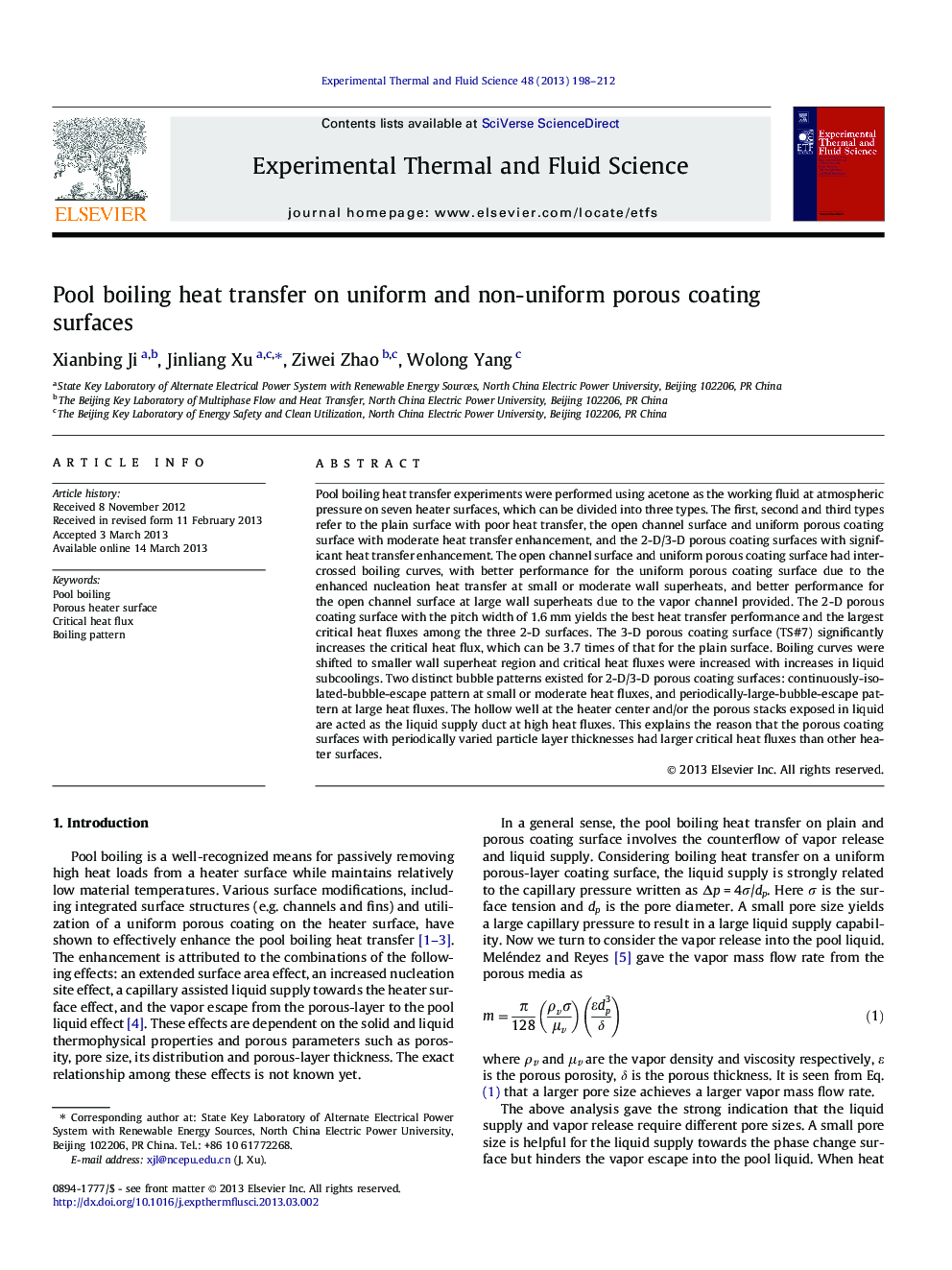| Article ID | Journal | Published Year | Pages | File Type |
|---|---|---|---|---|
| 651744 | Experimental Thermal and Fluid Science | 2013 | 15 Pages |
Abstract
Pool boiling heat transfer experiments were performed using acetone as the working fluid at atmospheric pressure on seven heater surfaces, which can be divided into three types. The first, second and third types refer to the plain surface with poor heat transfer, the open channel surface and uniform porous coating surface with moderate heat transfer enhancement, and the 2-D/3-D porous coating surfaces with significant heat transfer enhancement. The open channel surface and uniform porous coating surface had intercrossed boiling curves, with better performance for the uniform porous coating surface due to the enhanced nucleation heat transfer at small or moderate wall superheats, and better performance for the open channel surface at large wall superheats due to the vapor channel provided. The 2-D porous coating surface with the pitch width of 1.6Â mm yields the best heat transfer performance and the largest critical heat fluxes among the three 2-D surfaces. The 3-D porous coating surface (TS#7) significantly increases the critical heat flux, which can be 3.7 times of that for the plain surface. Boiling curves were shifted to smaller wall superheat region and critical heat fluxes were increased with increases in liquid subcoolings. Two distinct bubble patterns existed for 2-D/3-D porous coating surfaces: continuously-isolated-bubble-escape pattern at small or moderate heat fluxes, and periodically-large-bubble-escape pattern at large heat fluxes. The hollow well at the heater center and/or the porous stacks exposed in liquid are acted as the liquid supply duct at high heat fluxes. This explains the reason that the porous coating surfaces with periodically varied particle layer thicknesses had larger critical heat fluxes than other heater surfaces.
Related Topics
Physical Sciences and Engineering
Chemical Engineering
Fluid Flow and Transfer Processes
Authors
Xianbing Ji, Jinliang Xu, Ziwei Zhao, Wolong Yang,
